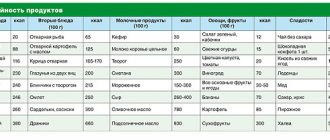- What it is?
- Role in weight loss
- Percentage
- Daily calculation
- Recommendations
According to statistics, to lose weight, 70% of people go on diets, 50% honestly try to go in for sports, 30% get hooked on pills.
And only 10% consider the daily calorie content of food and how much protein, fat and carbohydrates it contains. The last figure is so insignificant because most people do not understand how important they are for losing weight. Indeed, fasting and training lead to results, but they are often short-term and have a negative impact on well-being. But those who understand these formulas and percentages get rid of extra pounds for a long time and without any harm to health.
What it is?
Nutrients are the most important “building material” of our body, the ratio of which determines the amount of energy obtained from food and the characteristics of its processing by the body. Science divides them into three key groups - proteins, which are responsible for muscle growth, fats, which control hormonal balance, brain function, vitamin absorption, and carbohydrates, a source of glucose. Nutrients differ in energy value, effect on the body, and for a proper diet you need to know how much of them should be in food - in terms of calories and as a percentage.
What is BJU?
Many people often wonder what BZHU is? Literally, this formula stands for proteins, fats and carbohydrates. These components are included in almost any product. After entering the body, each of them performs certain functions, affects the well-being and functioning of internal organs, as well as body weight and human health.
It is worth noting! An abbreviation with the addition of the letter “K” in front is often found - KBZHU. It stands for calories, proteins, fats and carbohydrates.
Each product has a certain calorie content, which provides a person with the required energy. He receives the required portion of calories while eating food. The smaller it is, the more intensely the body has to burn fat deposits. In order to lose weight, one indicator is important - the percentage of BJU in each product. If it is close to normal, this means that the diet is correct and does not have a negative impact on health.
There are certain formulas that can be used to calculate the optimal combination of proteins, fats and carbohydrates, as well as the normal calorie content. Moreover, all this is determined for each person individually. According to the BZHU, a menu will be drawn up in the future, which will contain all substances within normal limits.
Norm of BZHU for women and men, depending on lifestyle
The rate of consumption of BJU for women and men may depend on the type of activity and lifestyle. If, for example, a person is constantly busy with mental work, but practically does not work physically, then his norm will be different from workers in the field of heavy physical activity.
There are several categories of activity, depending on which the BJU norm is calculated:
- Group I. It includes knowledge workers;
- Group II. This includes work involving light physical labor;
- III group. Medium hard work;
- Activities involving heavy physical work.
Below is a table with complete BJU data for men and women, depending on category and weight.
| Group | Weight, kg) | Women | Men | ||||||
| Calorie content (kcal) | Proteins (g) | Fat (g) | Carbohydrates (g) | Calorie content (kcal) | Proteins (g) | Fat (g) | Carbohydrates (g) | ||
| I | 50 | 1400-1500 | 95 | 50 | 150 | 1700 | 107 | 68 | 172 |
| 60 | 1500-1650 | 125 | 55 | 165 | 1850 | 117 | 73 | 181 | |
| 80 | 1700-1880 | 140 | 65 | 185 | 2100 | 129 | 82 | 207 | |
| 100 | 1900-2150 | 160 | 70 | 210 | 2300 | 143 | 87 | 232 | |
| II | 50 | 1730 | 110 | 68 | 175 | 1960 | 124 | 79 | 197 |
| 60 | 1900 | 119 | 74 | 188 | 2100 | 133 | 83 | 210 | |
| 80 | 2150 | 135 | 85 | 215 | 2400 | 149 | 93 | 236 | |
| 100 | 2450 | 153 | 95 | 243 | 2650 | 167 | 105 | 262 | |
| III | 50 | 1880 | 120 | 75 | 190 | 2130 | 134 | 82 | 214 |
| 60 | 2050 | 129 | 80 | 205 | 2300 | 143 | 86 | 229 | |
| 80 | 2400 | 145 | 90 | 235 | 2600 | 162 | 100 | 260 | |
| 100 | 2800 | 165 | 104 | 265 | 2730 | 180 | 113 | 289 | |
| IV | 50 | 2150 | 135 | 85 | 216 | 2410 | 153 | 92 | 243 |
| 60 | 2300 | 146 | 90 | 232 | 2600 | 162 | 100 | 257 | |
| 80 | 2700 | 165 | 104 | 266 | 2920 | 187 | 115 | 291 | |
| 100 | 3000 | 187 | 118 | 297 | 3300 | 205 | 129 | 325 |
Nutrients per day
As in the case of calorie content, physiologists, nutritionists and nutritionists calculate average, but quite informative standards of nutrients - the amount required to gain or lose weight, maintain activity, “build” muscles during strength training, and so on. Generally accepted values for different groups per day per 1 kilogram of body weight:
- for protein - 1.5 grams with average activity, 2 grams when playing sports;
- for fats - 0.8 grams with a standard lifestyle, 1.5 grams with constant physical activity;
- for carbohydrates - 2 grams, athletes and people engaged in heavy physical labor increase the value by two or more times.
Exceeding or decreasing the norm, which is the problem with most diets with “unproven effectiveness,” leads to an imbalance in the body, illness, and eating disorders caused by a lack of nutrients. Therefore, knowing “your numbers” and calculating BZHU is important for everyone who cares about health and nutrition.
Calorie content of foods
| Product | Proteins, g | Fats, g | Carbohydrates, g |
| White cabbage | 1,8 | 0,2 | 4,7 |
| Boiled potatoes | 2 | 0,4 | 16,7 |
| Apples | 0,4 | 0,4 | 9,8 |
| Fresh cucumbers | 0,8 | 0,1 | 2,8 |
| Tomatoes | 1,1 | 0,2 | 3,7 |
| Walnuts | 15,2 | 65,2 | 7 |
| Seeds | 20,7 | 52,9 | 3,4 |
| Boiled chicken without skin | 24.17 | 7.69 | 0.55 |
| Beef stew | 22,2 | 7,1 | 0 |
| Low-fat yogurt | 4.53 | 2.95 | 6.16 |
| Sunflower oil | 0,1 | 96,6 | 1,6 |
| Oat groats | 11,6 | 5,9 | 59 |
| Buckwheat | 12,3 | 2,8 | 65,8 |
| Rice | 6,7 | 0,7 | 78,9 |
| Raisin | 2,9 | 0,6 | 66 |
| Dried apricots | 5,2 | 0,3 | 51 |
When losing weight, it is important to observe not only the daily calorie intake, BJU, but also the quality of the products. The daily BJU should be made up of different products, including vegetables and fruits, meat and dairy products, cereals, butter and nuts. It is important not to overdo certain foods and nutrients to avoid gaining weight.
After all, in order to “cover” the daily requirement of BJU, two bars of chocolate are enough, which do not contain enough protein, but a lot of sugar and fat. With a balanced diet and moderate exercise, you will lose weight from fat very quickly. True, the weight will not go away in one week, as if you follow a strict diet, but the lost kilograms will definitely not come back.
Three good reasons to do nutrient calculations
It is necessary to calculate the ratio and amount of nutrients, first of all, to provide the body with everything it needs for development and functioning. A healthy body looks attractive, a person is better able to resist diseases, and he has enough energy to get everything done. By getting used to eating wisely, consciously, we discipline ourselves and develop a healthy habit - for life.
The second reason is the opportunity to lose weight correctly, without extreme diets or strict restrictions. There is no need to deny yourself certain dishes, provoking nervous breakdowns or hormonal imbalance. A balanced menu helps you not to break down due to carbohydrate deficiency or become weak due to protein starvation. The menu includes all products, and weight loss is facilitated by their ratio and calorie restriction.
The third reason to count nutrients is the ability to “adjust” the diet to your needs. Extreme deviations are harmful, but by wisely adjusting the percentage of elements, you can more effectively (and even faster) lose weight, gain weight or muscle mass, and form a beautiful body contour.
Details about the components
Squirrels
Material for muscle formation, necessary for proper metabolism, cell growth, and maintaining immunity. Their peculiarity is their inability to be formed from other substances (as is the case with carbohydrate-fat metabolism). Nutrients from meat, fish and legumes must be strictly controlled. Their excess leads to liver pathologies and disruption of the gastrointestinal tract due to breakdown products, and their deficiency leads to loss of muscle mass. The energy value per gram is 4 kcal. For 1 kg of body per day you need 1.2-2 grams of the protein component.
Fats
For a long time, substances contained in vegetable and animal oils, fish, meat and dairy products were considered almost the most harmful and were actively excluded from diets. This is a dangerous misconception: fatty acids and other elements are necessary for:
- absorption of vitamins from food;
- maintaining proper brain function;
- formation of joints, cell membranes;
- regulating the functioning of the lymphatic, hormonal and other systems of the body.
To lose weight and prevent vascular diseases, the percentage of nutrients is strictly controlled, but their limitation is no less harmful than excess. One gram contains 9 kcal; 1 kg of body per day requires 0.8-1.1 grams.
Carbohydrates
With them, the body receives most of the energy for activity and effective training, and they are also “responsible” for excess weight gain, uncontrollable attacks of hunger and bad eating habits. A well-organized diet should be dominated by sources of healthy, “slow” nutrients - unprocessed cereals, fruits and vegetables with a low glycemic index and high fiber content. If they are lacking, a person becomes weak and training becomes ineffective. One gram contains 4 kcal, the amount per 1 kg of body is calculated taking into account the protein and fat components (according to the “residual principle”).
BJU
BJU is converted into kcal coming from food. They can be “divided” into three parts:
- Squirrels. This nutrient is a building material for muscles, bones and the tissues of our body in general. When consumed, the caloric content of proteins is spent on hair growth, nails, restoration of wounds on the skin, and, with a slight excess, on muscle growth. The calorie content of protein foods cannot go into fat deposits and promote weight loss, but you cannot eat proteins instead of fats and carbohydrates - the body changes its metabolism, and after changing the diet, the kilograms will return. 1 g of protein carries approximately 4 kcal. Protein can be found in large quantities in fish, meat, chicken, cottage cheese, egg whites, soybeans and legumes. It is very important to consume enough protein for children and adolescents, as their bodies are actively growing and developing. If a growing body does not have enough protein, the child may begin to lose hair and teeth, and bones may often break. Changes also occur inside the body - the muscular, skeletal and nervous systems develop poorly, and drowsiness increases. Adults also should not give up protein foods, as interruptions in the functioning of the same systems may occur, and it will be difficult to restore health;
- Fats. This nutrient also helps the human body in the growth of new cells and the maintenance of the nervous system and metabolism. Lack or absence of fats leads to fatigue, lethargy, and increases appetite. In women, cycle disruption may occur and breasts may become smaller. There are as many as 9 kcal per gram of fat, so fat is the highest calorie nutrient. They are found in avocado, butter and vegetable oils and nuts (especially walnuts);
- Carbohydrates. This group is divided into fast and slow. Simple carbohydrates are those that are instantly absorbed and enter the bloodstream, sharply raising insulin levels and just as sharply lowering them. After eating a meal containing fast (simple carbohydrates), after a while you will want to eat again. Complex carbohydrates will keep you full for a long time with a minimum amount of calories, since they break down much longer. Simple carbohydrates can be found in sweet fruits (bananas, peaches), white bread, semolina, sugar, flour and flour products. When losing weight, such calories are dangerous for your weight and it is better to consume them in the morning and in small quantities, for example, one banana. Complex carbohydrates are all cereals except semolina, vegetables, and some fruits. 1 g of carbohydrates equals approximately 4 kcal.
Video
BJU must be combined in the proportion required for the body. Standard daily BJU: about 20% (no less) is allocated to fats, about 30% to proteins, and 60% to carbohydrates. If you feel that the carbohydrate intake is too high for you, you can establish a balance that is comfortable for you and consume more protein and fat.
Nutrient ratio and calorie content
The standard daily amount of nutrients (according to USDA recommendations) for a 2000 kcal diet is considered to be 91 grams of protein, 65 grams of fat and 271 grams of carbohydrates. Their basic ratio is in the same order for a balanced type of metabolism - 30% -30% -40% or, as they briefly indicate, 3-3-4. For representatives of different genders and people with specific goals (lose weight, build muscle, and so on), the norm is adjusted.
Ratio for women
Women with a protein type of metabolism are recommended to shift the ratio of nutrients to the formula 5-3-2, and with a carbohydrate type - 25-15-60. The balance also changes with different activities:
- for weight loss the ratio is 4-2-4;
- for “drying”, that is, the formation of a beautiful muscle relief - 4.7-2.3-3;
- for weight loss and “drying” - 5-2-3;
- for gaining normal weight - 3-2-5.
Ratio for men
Men under the age of 40-50 who are engaged in intellectual work are recommended to adhere to the ratio of 3.3-2.5-4.2. Under heavy loads and physical work, the balance shifts to 2.7-2.3-5. To lose weight and gain muscle mass at the same time, the ratio is changed to 3-1.5-5.5.
Optimal ratio of proteins, fats and carbohydrates
The BJU norm is determined individually for each person, based on weight, age, gender, and activity. However, nutritionists are of the opinion that the optimal proportion is 1:1:4. This ensures a balanced diet and the required amount of calories. For athletes and muscle growth, the distribution formula is different - 1: 0.8: 4, and for gaining large mass, the need for carbohydrates will increase by 2 times.
BJU norm for weight loss
Do you want to become slimmer? Then the calculation of BZHU for weight loss as a percentage will have a different form. You can start the fat burning process by increasing the percentage of proteins (white meat, eggs, seafood, cottage cheese, milk and kefir) and reducing carbohydrates (sweets, baked goods, pasta, potatoes). You shouldn’t go to extremes, test yourself at a minimum - keep the ratio of proteins, fats and carbohydrates “adequate” for weight loss. The main thing is to know the optimal combination. Plus, don’t disdain training: muscle tone is good. Don't forget about healthy sleep.
The ratio of BZHU for weight loss for women
Let’s take a person’s daily diet as a conditional 100%. You will begin to lose weight if you follow a diet that consists of 30-35% proteins, 10-25% fats, 45-50% proper carbohydrates. If you are going to undergo drying, then you need to reduce carbohydrates and fats to a minimum. The ideal percentage ratio of BJU for weight loss is 30:20:50%. Girls do not need to give up fat, their weight should be within normal limits, because they play an important function for the body (they affect the health of the reproductive system, the synthesis of hormones, and are needed for hair and nails).
How to correctly calculate the BZHU norm?
To correctly calculate your diet, it is not enough to know the ratio of nutrients - the energy value of food, which is calculated in calories, is important. To calculate the required amount of kcal per day, there are special food tables (per 100 grams, raw) and online calculators. To calculate KBZHU for weight loss, you will need to choose your optimal ratio of nutrients, find out the permissible daily calorie intake and distribute the components. For the calculation, you will also need the number of kcal in the nutrient - it is given above.
The standard formula for those who want to maintain the “status quo” and exercise up to three times a week is body weight in kilograms, multiplied by a factor of 35. For a diet, the coefficient is reduced to 24. You can simplify the calculations using special forms, which are presented in abundance on Internet resources dedicated to healthy lifestyle and fitness. It must be taken into account that the figure must be adjusted when the weight changes by 10 kg.
The total number of kcal per day is divided according to the required percentage of nutrients. So, if a woman’s diet needs to be 1600 kcal in order to lose weight, she needs to use the 4-2-4 model and consume 640 “protein” kcal, the same amount of carbohydrates and 320 fat. Then they can be converted into grams - taking into account the kcal content in 1 gram of the nutrient.
Mifflin-St. Geor Formula
To calculate KBJU for a healthy diet, women use the formula 6.25*P + 10*M – 4.92*B – 161, where:
- P stands for height;
- M is the required mass;
- B - age.
The result of the calculation is the number of calories per day. For men it is calculated differently: 6.25*P + 10*M – 4.92*B +5. The result can be adjusted by multiplying by 1.2 for no physical activity, by 1.375 for activity three times a week, and by 1.6375 for daily exercise.
Harris-Benedict formula
The optimal ratio of KBZHU is calculated as (65 + 9.6*M + 1.8*P) – 4.7*B for women and (66 + 13.7*M + 6*P) – 6.8*B for men . M here does not mean desired, but actual body weight.
Bju ratio for weight loss
In grams per kg of weight
As I already said, calculations for weight loss are carried out a little differently. The weight you are aiming for is taken, but no more than 5 kilograms less than your current one. This means that if your goal is to lose 15 kilograms of weight, the norm will need to be recalculated 3 times, each time reducing the desired body weight by 5 kilograms. Next, use one of the formulas described above.
In percentages
The percentage of nutrients if you have a weight loss goal will look like this: 40-50% proteins, 30-40% healthy triglycerides and only 20% slow carbohydrates.
Fats burn in the fire of carbohydrates
For weight loss, it is important to know this - with carbohydrate deficiency, the fat “reserve” is not consumed. Therefore, the key factor for effective and healthy weight loss is a balanced menu. To get the maximum benefit from products, you don’t have to waste your time selecting them. The BeFit delivery service has prepared diets with the optimal ratio of KBJU for different needs. The menu from professional chefs is updated every week - and each one helps you achieve your goal and make your body healthy and beautiful.











